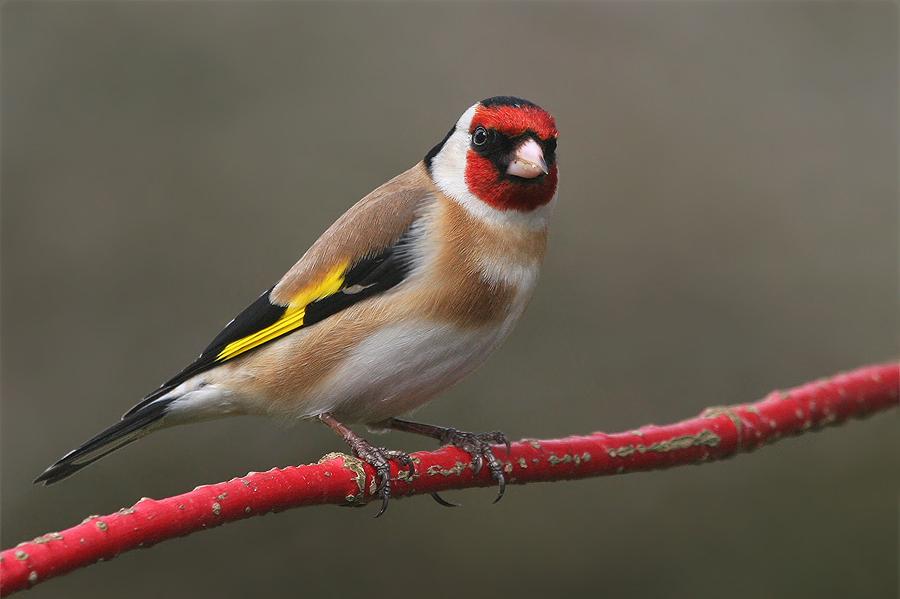The WSO Records Committee recently reviewed a new scientific paper published in NeoBiota by Julie Craves and Nicholas Anich that explored the spread of European Goldfinches in the Midwest.
The five-member committee, chaired by Quentin Yoerger, voted unanimously that it felt this species met all criteria for inclusion on the ABA list as an established exotic.
The committee then reached out to the Illinois Ornithological Society to see if they had reviewed the documentation. The hope is to have both organizations approach the ABA together to support the inclusion of the European Goldfinch on the ABA checklist.
European Goldfinches are native to Europe and Asia but are a popular cage bird around the world. Apparently a pet importer from the Chicago area ended up releasing these birds in the early 2000s and they have subsequently spread throughout the Midwest, although the core of their range appears to be between Milwaukee and Chicago.
The paper in NeoBiota examined these imported birds and their known distribution, breeding status, nesting phenology and natural food sources. Data from the second Wisconsin Breeding Bird Atlas were key in this analysis, with  records during the WBBA II field seasons from 2015 to 2019 recording many European Goldfinches in Racine and Kenosha Counties, and records since then suggesting some additional northward movement into Milwaukee County.
records during the WBBA II field seasons from 2015 to 2019 recording many European Goldfinches in Racine and Kenosha Counties, and records since then suggesting some additional northward movement into Milwaukee County.
Breeding codes added by atlassers helped clarify the breeding timing of European Goldfinch on this continent. American Goldfinch are very late nesters, but European Goldfinch appear to nest somewhat earlier, potentially reducing the chance that hybridization will be a problem.
Exotic species often are ignored by birders until they are deemed countable. But new revisions of how exotic species are reported and tagged with an exotic status in eBird should help with this issue. eBirders are encouraged to report all free-flying birds on their checklists, which should help track developing invasions.
In the case of European Goldfinch, they have been reproducing in the area between Chicago and Milwaukee for two decades now and it appears that they will be a permanent part of our avifauna.
Anich is a conservation biologist with the Wisconsin DNR’s Natural Heritage Conservation program and is coordinator of the second Wisconsin Breeding Bird Atlas; Craves is an ecologist and retired director of the Rouge River Bird Observatory in Dearborn, Mich.
Click to see an animated map of European Goldfinch records:
https://github.com/nmanich/european_goldfinch/blob/main/eugo_animation.gif
The full paper is free to read at this link:
https://neobiota.pensoft.net/article/97736/


